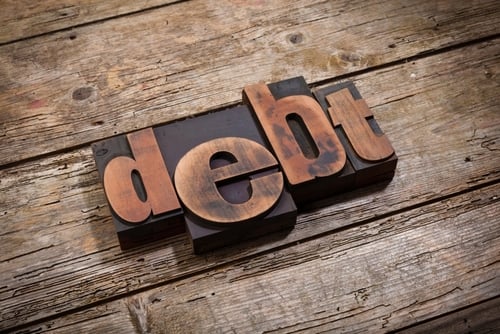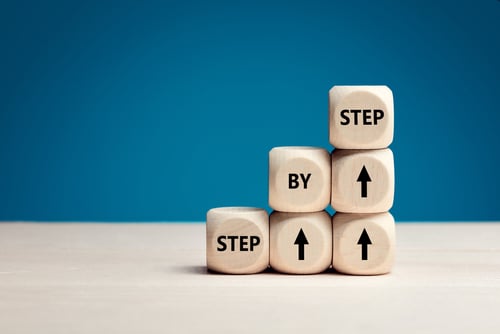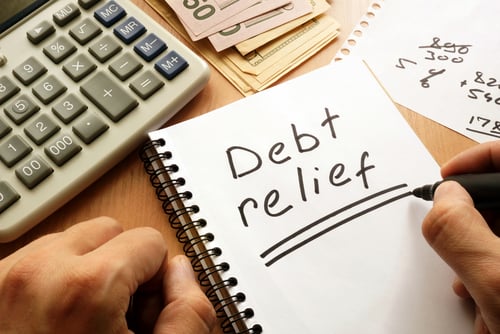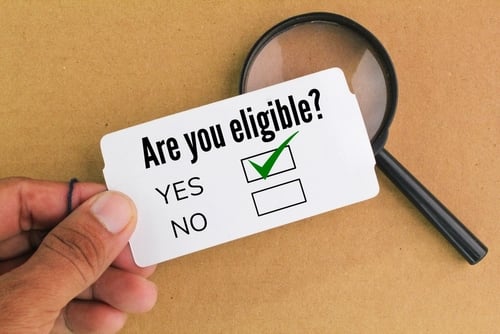Credit and Loan Plans
There are many instances in which it can make sense for an individual to borrow money. Whether it be for the purchase of a big-ticket item such as a house, car, or education tuition expense – or if you are pursuing a loan for another purpose – it makes sense to familiarize yourself with the types of credit and loans that might be available to you.
Regardless of the type of loan you may be pursuing, make certain to fully understand the terms and conditions for repayment – including the duration of the loan, the way interest rates are calculated, and the loan payment due dates.

Learn the Landscape
There are many different types of credit and loans available to consumers. Banks and credit unions often structure mortgages that aid in the purchase of a house, as well as other complex loans such as student loans, automobile loans, and personal loans. Meantime, other loans available to specific subsets of the population – including small business loans and loans available exclusively to military service veterans, also dot the landscape.
Finally, other options include securing promissory notes from friends and family, consolidation loans, home equity loans and credit lines, as well as possibly borrowing from retirement plans and insurance policies. All loans, regardless of their origination, are governed by federal and state guidelines designed to protect the consumer from usury – or unusually high interest rates, as well as other unscrupulous lending practices.
ABC
Difference Between a Loan and a Line of Credit
The difference between a loan and a line of credit is the mainly the interest. In example when you get a loan you get a lump sum and pay t back with interest and principal. When utilizing a credit line you only pay interest and principal for what you use. For example if you have $10,000 available and you only use $1,000 you will only be paying interest and principal for the used $1,000 amount. In a loan you would get the $10,000 and pay it back according to the terms.
The Two Types of Consumer Credit and Consumer Loans
Fundamentally, there are two categories of consumer credit: Open-end and Closed-end. You can think of open-end credit as revolving credit, the most common type of which is credit-card debt. Characteristic of open-end credit is that it is typically utilized and paid back on a monthly basis, though it is not required to be paid in full each month. Credit cards, which should generally be held in reserve for assisting with monthly budget expenses in accordance with gaps in cash flow availability, or for unexpected emergencies, are the most common example of open-end credit. When not paid in full, interest rates typically ranging from 12-25% or higher are applied to the credit card balance, leading to the undesirable situation of revolving debt on a month-to-month basis. Home equity loans and lines of credit are other examples of open-end debt.
Meanwhile, Closed-end debt, often referred to as installment loans, are specific purpose loans that carry interest expense and are paid off on a regular schedule over time. Common examples of installment loans include mortgages, automobile loans, and payday loans. Interest rates will vary according to the borrower’s credit score, which underscores the importance of a consumer possessing a good understanding of how to properly utilize credit cards (link to credit card guidance page) to aid in building a strong credit profile. The higher the credit score, the more favorable the terms associated with a closed-end loan. Whereas credit card debt is unsecured, in the case of closed-end debt, a lender can seize property of the debtor’s if the loan falls into default. Accordingly, closed-end loans are characterized as a form of secured debt.

Types of Loans
There truly are a variety of loans that suit a wide range of purposes and needs. Let’s take a birds-eye view, starting with mortgages.
Mortgages are designed to meet the need of what will usually be the biggest-ticket item that a person will make in a lifetime. Very few people possess the liquid cash reserves required to purchase a home without a need to borrow, and mortgages address that need. Mortgages can last for up to thirty years, and because of their long duration and the fact that they are secured by the underlying physical property, they often come with lower interest rates attached.
Next up, let’s talk about automobile loans, another form of secured debt, in this case tied to the car for which the loan was written. Auto loans typically last in duration from five to seven years and are issued by car dealerships, banks and credit unions. Once again, your credit score will play a significant part in determining the interest rate charged, and you should know that dealership loans, though sometimes more convenient than the process of securing a bank loan, often come with higher interest rates attached.
Student loans, which have reached eye-popping debt levels in the United States, (American students owe $1.45 trillion in student loan debt as of September 2017) are designed to help pay for the cost of higher education. Though Federal student loans typically carry lower interest rates and more favorable repayment terms than private student loans, the perception of student loan debt as “good debt” has recently come under greater debate with student loan debt reaching crisis proportions and many students unable to secure well-paying jobs upon graduation.
Personal Loans are a form of unsecured debt that can be used for any purpose that the borrower wishes, but they aren’t as common as they once were. The review process conducted by banks, credit unions and online lenders has become more difficult for borrowers and often results in unappealing terms and high interest rates. However, if you do possess a strong credit profile, high income level, and relatively low debt level, the flexibility that a personal loan provides can be worth the scrutiny of the application process.
Payday Loans are another matter altogether and should be strictly avoided under all circumstances. These are small, short-term loans, generally for under two weeks in duration, designed to “help” low-income individuals and families bridge the gap when a little money is needed before the next paycheck is due to arrive. However, the fees attached to these short-term loans are excessively onerous, as it is not uncommon for them to equal or exceed any amount borrowed. Payday loans are typically extended to relatively uninformed borrowers living in minority neighborhoods by local check cashing outlets and pawn shops.
...and Even More Loans
If you are an aspiring entrepreneur seeking to launch a business, a Small Business Loan granted by the Small Business Administration (SBA) could make sense. Before seeking a loan from the SBA, spend several months building and enhancing your business credit profile by making timely payments to your vendors, suppliers, and equipment lessors.
If you are a Veteran, the Department of Veterans Affairs (VA) can be a very useful resource in helping you to secure a mortgage. In fact, with the VA often acting as co-signer, VA mortgages usually carry lower interest rates than conventional mortgages and can make it easier to secure a mortgage even when a borrower possesses a lower credit score and less pristine credit profile.
If you are saddled with revolving high-interest credit card debt from a variety of sources, a debt consolidation loan represents a possible solution for you. A consolidation loan can be utilized to pay off your creditors and typically results in a lower blended overall interest rate while simplifying the monthly payment process. Before embarking on the path toward a debt consolidation loan, be sure to speak with a credit counselor from a reputable credit counseling agency who can conduct an in-depth phone interview with you regarding your financial situation as it relates to your income, expenses and debt levels. A skilled counselor will help you determine whether a debt consolidation loan, debt management program, debt settlement program, or possibly even filing for bankruptcy would be the best course of action for you to pursue.
Home Equity Loans and Home Equity Lines of Credit (HELOC) are options for those who have accumulated equity in their house, in other words, for those who owe less on a mortgage than the actual value of the dwelling. These are a form of secured debt, with the house staked as collateral, and frequently come with lower interest rates and more favorable terms as a result. Both must be paid in full in the event the underlying property is sold, with HELOCS carrying more flexible interest rates and payment schedules than home equity loans.
If the above loan possibilities appear out of reach, an individual may be eligible to borrow from a retirement plan or against an insurance policy, though there are often tax consequences, particularly in the event of non-repayment. Additionally, there’s always the possibility of borrowing money from family members and old friends, but for obvious reasons, this may not be a good idea. Even though such a loan can be entered into with full intention of repayment in an agreed upon manner, it goes without saying that if things don’t go as planned, it could place a serious strain on what had once been a good relationship. Is this possibility really worth the risk? At the very least, reflect upon that question before pursuing such a loan, and out of respect, show a willingness to assume legal responsibility by offering to sign promissory notes with your friend or family member just as you would with any bank or other formal creditor.
Borrowing is Serious Business
Though it can feel good to be the recipient of a loan when you need one, always remember that for every dollar of debt that you take on, you will eventually have to pay it back. Fully embrace the reality of this responsibility before assuming a loan of any kind, and always be mindful of the terms associated with your debt. Be completely clear as to the amount, duration, interest rate, and payment schedule, as well as any collateral attached to the loan and any consequences of non-payment. In this way, you will be positioned to make wise borrowing decisions that can help you reap the benefits of extra financial flexibility while enhancing your overall credit profile through responsible repayment of your debt or loan.

Credit & Loans
Are you in debt? we can help
Credit and Loan Plans FAQ
For borrowers with weaker credit, it can be challenging to find a loan with a reasonable interest rate at suitable terms. However, there are a number of reputable lenders who are willing to provide loans to people with credit scores hovering in the low 600s and below. Criteria to consider when applying for a loan with bad credit obviously start with interest rate, and the cold reality is that low interest rates will not be made available to borrowers with weak credit. However, this does not mean that signing on for an exorbitantly high APR is a must. In fact, the best lenders will offer interest rates that are competitive and in alignment with your credit score. Look for flexible loan duration (rather than a fixed term such as three or five years) that allow for a longer duration and lower monthly payment, or pre-payment that will result in significant interest expense savings over the life of the loan.
A subsidized loan is a type of Federal student loan that does not accrue interest while a student is enrolled at least half-time, during the post-graduation grace period, or when there is loan deferment.
An installment loan is a type of loan that is repaid over time, during which a number of regular, scheduled payments are to be made. Examples of installment loans include home mortgages, auto loans, student loans, and personal loans.
A secured loan is a loan that is collaterally backed, and will typically come at a lower interest rate than an unsecured loan, which is not backed by collateral. Examples of secured loans include mortgage loans and auto loans.
An unsecured loan is a loan that is not backed by any collateral, and as such, comes with a greater risk to the lender, who will attach a higher interest rate to an unsecured loan as compared to a secured loan. A common example of an unsecured loan is unsecured credit card debt.
Points on a loan are calculated as a percent of the loan amount, with one point equaling one percent of the loan amount. In a mortgage loan scenario, lenders will often offer the opportunity for a lower interest rate over the life of the loan, contingent upon a certain number of “points” being paid upfront. For example, three points on a $200,000 mortgage loan equates to $6,000.
There are several steps involved in calculating interest on a loan. First, divide the interest rate by the number of payments that will be made in a year – for example, monthly payments would imply dividing by 12. Next, multiply this figure by the balance of the loan, and this will give the amount of interest expense included within the first monthly payment. Subtract this amount from the full amount of the monthly payment, this will generate the amount of the payment that was applied to the principal. The amount applied to the principal can then be subtracted from the original loan balance to get the new remaining loan balance, and the process can be repeated for the following month, and each successive month.
Get Debt Relief
Speak with licensed debt specialists dedicated to guiding you toward financial stability every step of the way.

Ready To Get Started?
See if you qualify for debt relief. Get a Free savings estimate to see how quickly you can be debt free.
Embrace financial freedom with our tailored solutions, expert guidance, and unwavering commitment to your success.
Experienced Professionals
Our experienced team has helped thousands of clients successfully eliminate debt and regain financial freedom.
Customized Solutions
We know every financial situation is different, so we design personalized debt relief plans to fit your specific needs and goals.
High Success Rate
Our proven debt relief strategies deliver real results. With a strong track record of success, we help clients achieve lasting financial stability.
Confidential Consultation
Your privacy is our priority. All debt relief consultations are 100% confidential and handled with the highest level of discretion.
Explore other blogs











